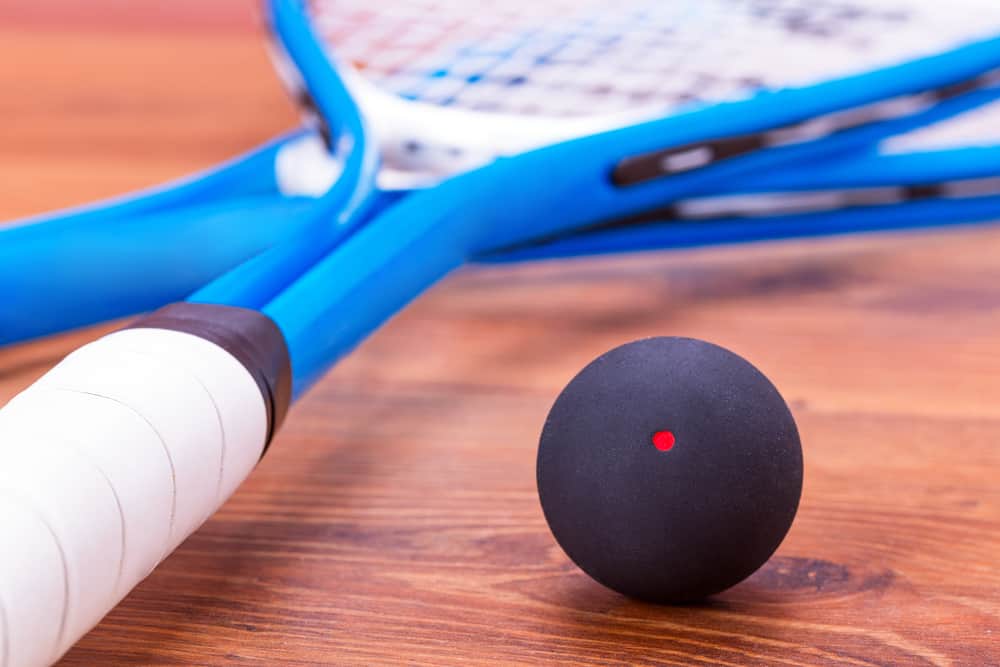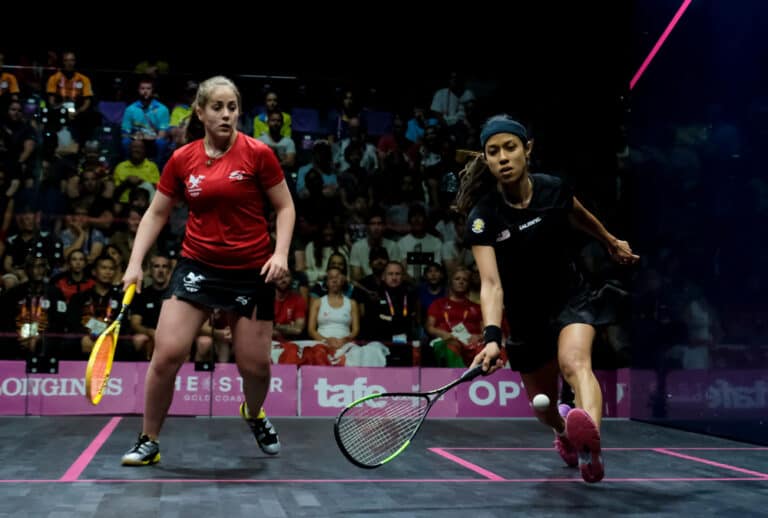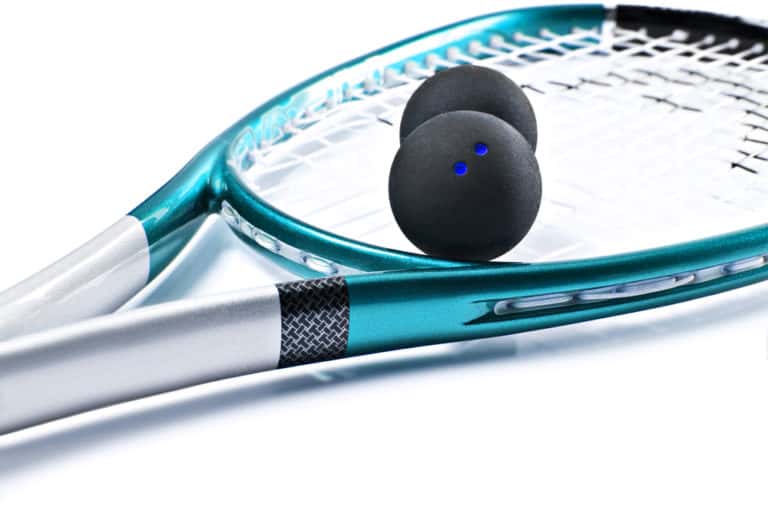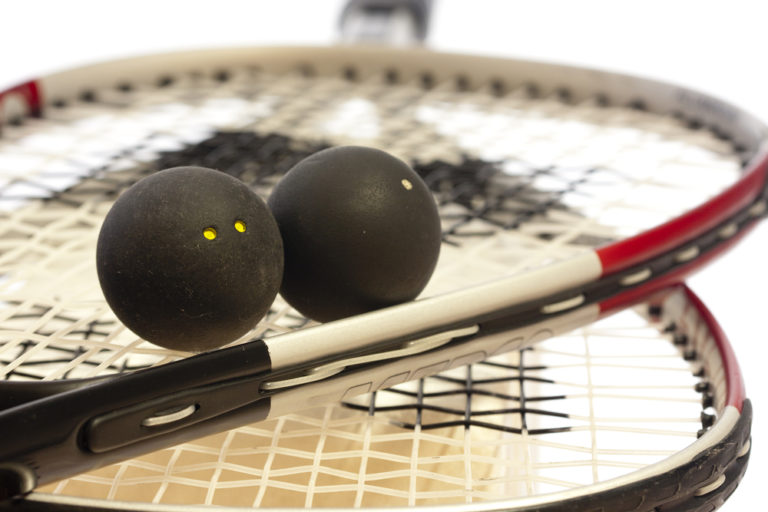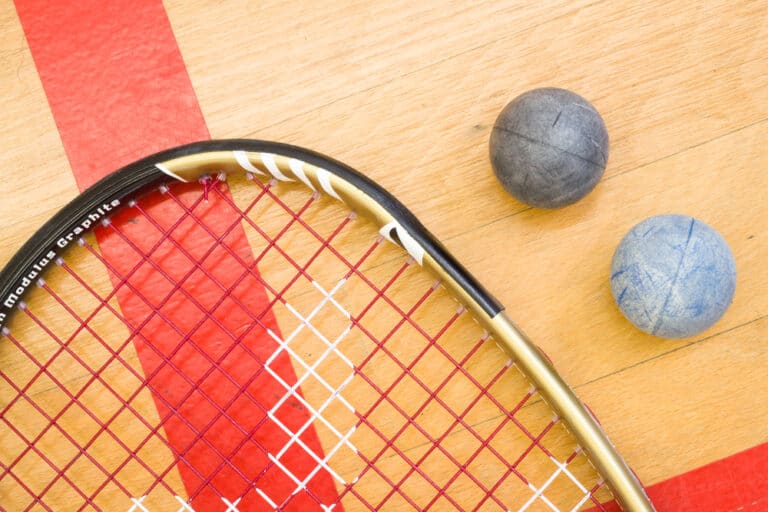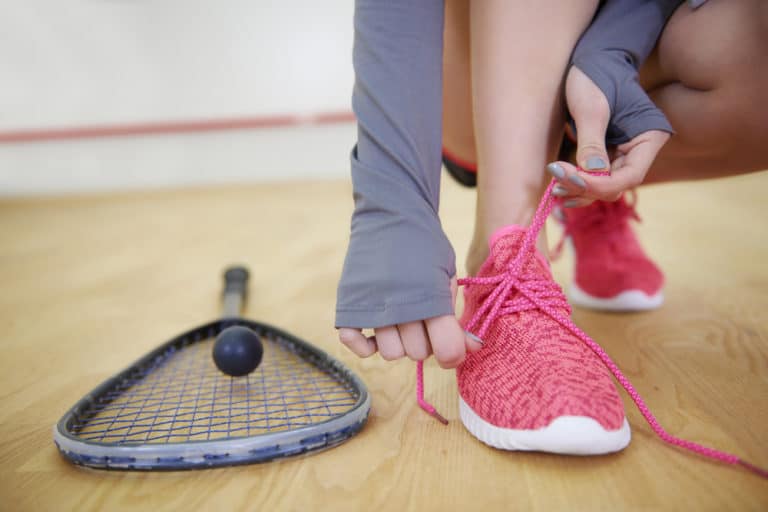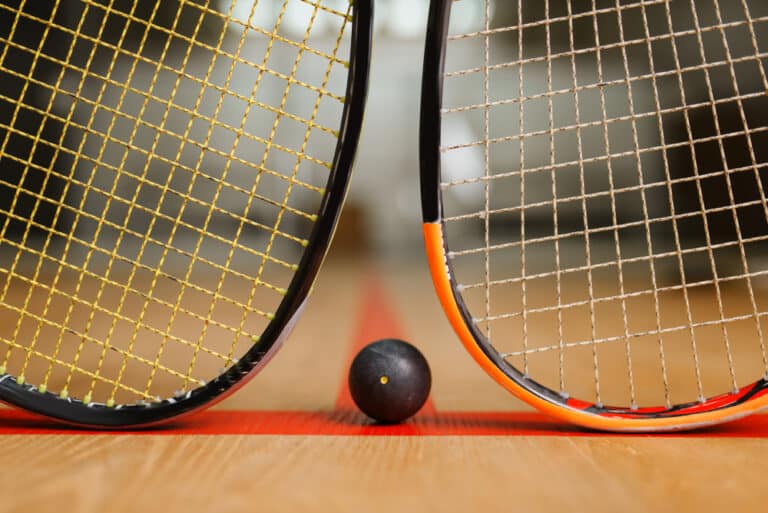What Do The Dots On A Squash Ball Mean?
Squash is one of the best racket sports for obtaining high fitness levels, and the training stems into more than just the play on the court. However, we are not pondering how fit it will get you, but rather what the dots on the squash balls mean. You may have noticed that different colored dots appear on squash balls and, like many others, wonder what they mean.
Blue dot squash balls are the easiest to bounce, and they also have far more hang time than the likes of the double yellow dot ball, which is intended for professional players. The balls also vary in size, depending on what color dot they possess, and the ease of play is different with each.
There are various brands of squash balls and types intended for different levels of ability, so to find out more about what each of these colored dots means, be sure to read on to find out just what it is that these colors mean. We will also help you understand what type of ball you should be using as not all players are on the same level, but rather need different equipment for their needs.
The Meaning Of The Dots On Squash Balls Explained
Although most sites will tell you that there are four types of squash balls, there are actually six; it just so happens that there are four of them, which are far more common than the other two. We shall touch on all six, but then get into the finer details of the main four, which you are sure to find in any sports shop.
The dots basically represent the bounce level, how fast they tend to move on the court, and their hang time in the air. There are also aspects such as what climate and altitude they should be used in, so we have broken down each of the balls available for adult players in the table below and then gone on to further explain their fuller meanings and purposes.
| Color | Bounce | Speed | Playing Level |
| Blue | High | Very fast | New players |
| Red | Medium | Fast | Novices |
| Green | Fairly slow | Average | Experienced players |
| Yellow | Relatively slow | Low | Advanced players |
| Double Yellow | Slow | Very low | Professional players |
| Orange | Incredibly low | Incredibly slow | For high altitude |
You will find that there are four main types of balls in squash, which adult players use. Other types of balls are dedicated to junior players and those who are absolute beginners who have likely never played a racket sport before. Below, we will look at these main types and explain what sets them apart from one another.
The four main types of balls that you are likely to see people using on any given squash court are the single dot balls which are blue, red, yellow, and then the double yellow dot. Various companies manufacture squash balls, but the most common brand you will find people using is the Dunlop brand. This is usually due to their better quality and overall value for money.
Although we will outline the balls according to the standard colors you will find on them, it is essential to note that certain companies offer varying colored dots on their balls. And if you are unsure, ask a salesperson in-store to help you pick out the suitable balls for you. However, the ones we have mentioned are the most likely to be used on the court.
It is best to consider playing with either a blue or red ball when starting. At the same time, you work on improving your game before advancing to higher level balls which require longer rallies and regular hard strikes to ensure that they are sufficiently warm enough for play. Once your squash game improves, you can consider using the single yellow dot balls.
However, do not be tempted to use an advanced ball too soon as it may well hinder your overall play and might ultimately deter you from continuing with the sport, and we do not want that to happen. Additionally, even once you have leveled up to a single yellow dot ball, reconsider the idea of advancing to a two-dot yellow ball, as these are intended for the advanced and professional player.
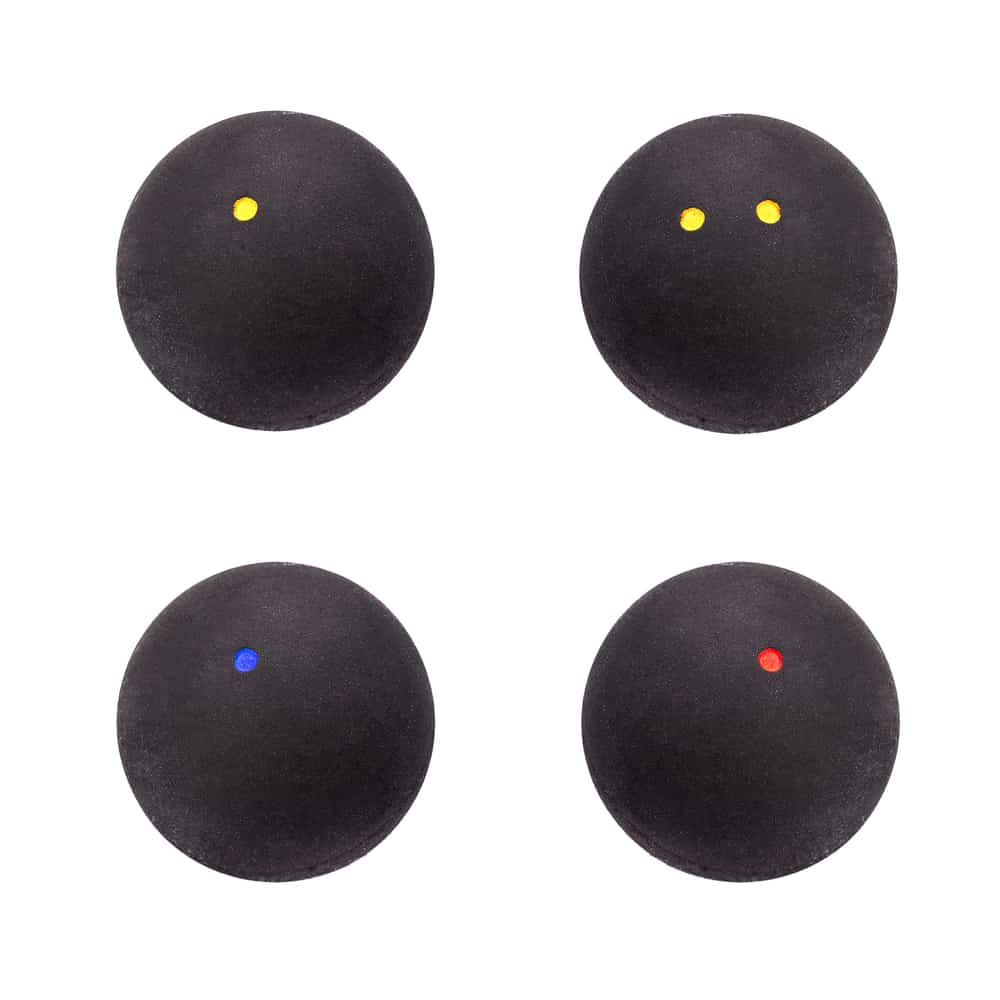
The Single Blue Dot Ball In Squash
Single blue dot balls are typically reserved for absolute beginners and sometimes junior players. They are the ideal option for those who are brand new to squash and are just starting on the journey of learning how to play. These people have often never played any form of a racket sport before and thus need the assistance of a ball that will offer more bounce.
A significant aspect of the blue dot ball is that it is larger than the other balls, which gradually shrink in size as you level up. A larger ball means that you have a better chance of hitting it, and therefore these are great for people who are still learning to get their eye in. They also offer far more bounce to them, and some research states that they offer up to 40% more bounce than a double yellow ball.
Bearing this in mind, it goes without saying that the ball is easier to warm up than the more advanced balls and stays warm with less effort than the others. The hang time or time the ball stays in the air is also significantly more than that of the other balls in this article.
The Single Red Dot Ball In Squash
This ball is recommended for those who have been playing squash for a while but do it on a more recreational basis and are not serious players, but are of an intermediate level of proficiency in the sport. They enjoy the game and are not highly competitive when it comes to playing; however, with that being said, that does not mean that the games cannot get heated with a red ball.
If you have experience playing other racket sports, you are likely to start by using a red dot ball as they are less bouncy than blue balls and are intended for someone who knows how to handle a racket reasonably well. These balls are also sometimes used by trainers and coaches to help novices improve their overall game.
If you are someone who simply wishes to have fun on the court and does not want to take the game too seriously, then this is the ball for you; it offers less bounce and hang time than the blue dot ball but still affords you more than the single and double yellow balls. They are smaller than the blue dot balls, but slightly larger than the yellow dot ones.
The Single Yellow Dot Ball In Squash
The single yellow dot ball was, until 2001, the official squash ball for all professional tournaments and was the ball of choice of professional players. The main difference between it and the double yellow dot ball is that it, like the other two aforementioned ones, is that it offers more bounce, not a great deal, but enough to make a noteworthy difference to play.
The more significant amount of bounce translates to longer hang time, which is key, especially in warmer climates or on courts where the temperature in the building is set warmer. However, sometimes in colder climates, the courts are no warmer than elsewhere, and thus the extra bounce offered is canceled out by the cold.
Therefore, you will often find that highly advanced players will use the single yellow dot ball over the double yellow dot ball as it simply makes for easier play. The double yellow dot is even more affected by colder environments. The pros will use either the single or double yellow dot in warmer climates.
This is your ball if you hope to take your squash game to the next level. It is smaller than the blue and red dot balls, offering far less bounce. Therefore the rallies need to be longer, and you will have to be able to drive enough power behind the ball to keep it warm during play.
The Double Yellow Dot Ball In Squash
In 2001, the World Squash Federation opted for the double yellow dot ball to become the official squash ball for all subsequent professional games. This type of ball requires extreme levels of skill and sound technique to play, and the players need to be able to have flexibility, advanced agility, and strength to be able to play with this ball.
If you are not an elite player or a professional, we highly recommend that you steer clear of trying to use these balls. Often, new players believe that this is the standard ball of choice, and their gameplay is entirely dismantled as they do not possess the ability to keep the ball in play long enough for them to enjoy the game properly.
Apart from its smaller size, less hang time, and the need for it to be in constant play to remain warm, the ball is also far less likely to bounce than the others we have gone over. You will be shooting yourself in the foot if you think you can walk onto a squash court without advanced experience in the game and play with this ball.
Conclusion
Be aware of your level of play and select a ball color ideal for how well you can play the sport. There is no shame in starting with a blue dot ball if need be because, with time, you will improve and thus be able to graduate to using a more advanced level ball. All in all, the dots on the balls are simply indicators of the type of play you can expect from them and not a reflection of your skill level.
References
- https://www.sportageous.co/types-of-squash-balls-and-the-right-one-for-you/#
- https://www.squashpoint.com/blogs/blog/how-to-choose-the-right-squash-ball/
- https://www.playfinder.com/blog/what-the-dots-on-squash-balls-mean
- https://psaworldtour.com/news/view/3939/squash-balls-explained
- https://www.head.com/de_CH/squash/squash-how-tos/how-to-choose-the-right-squash-ball

